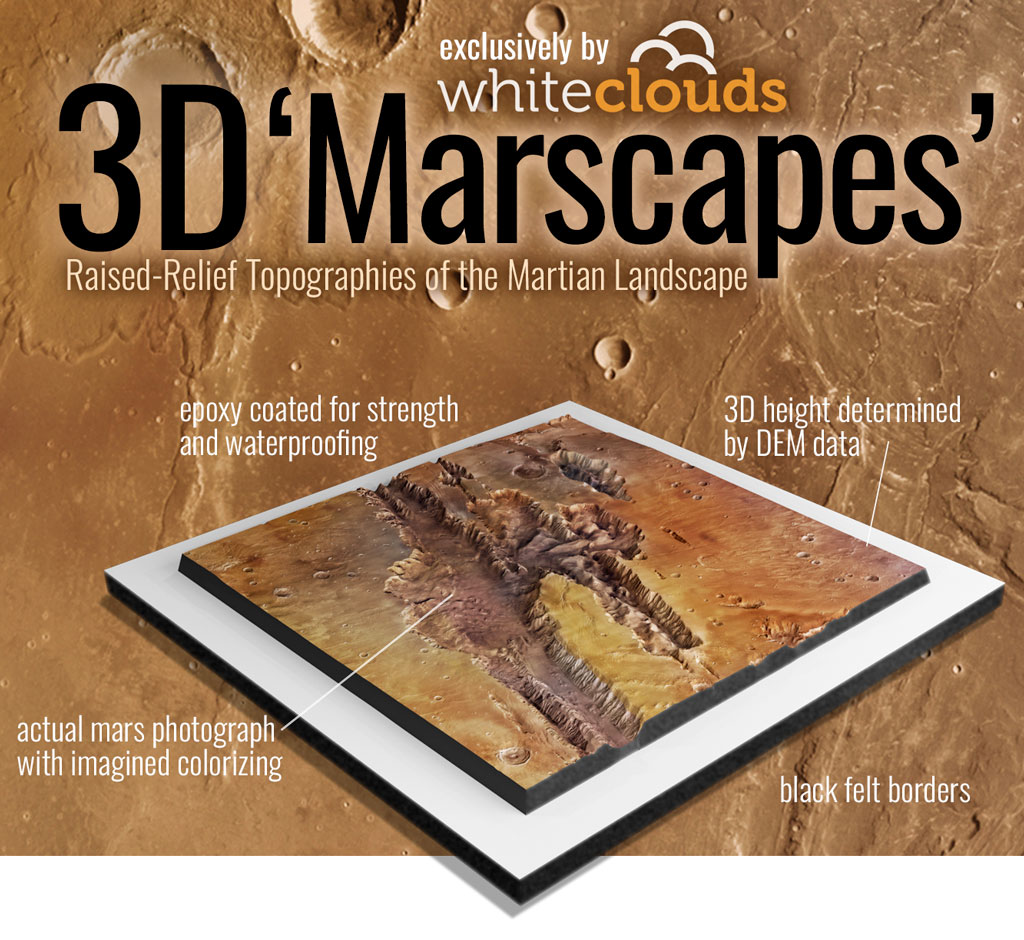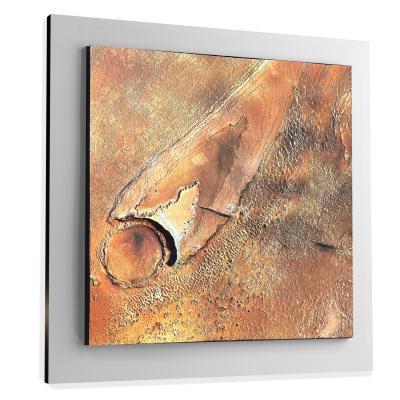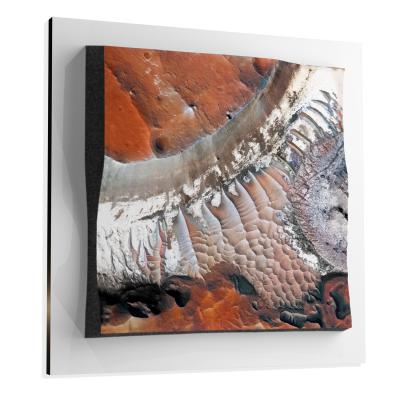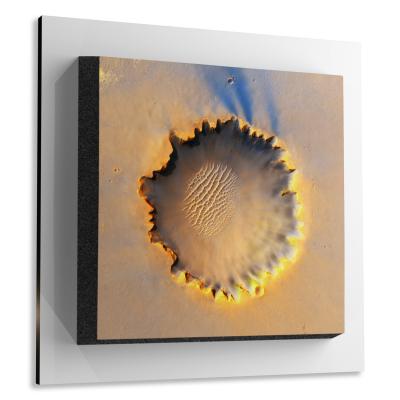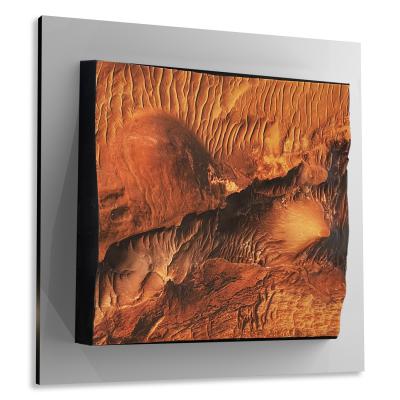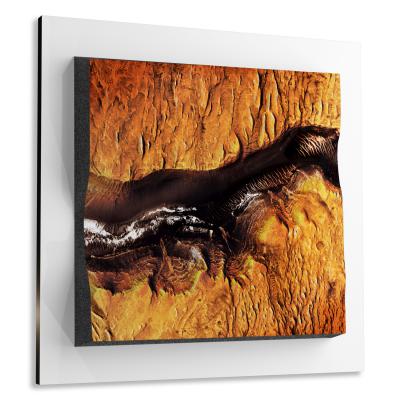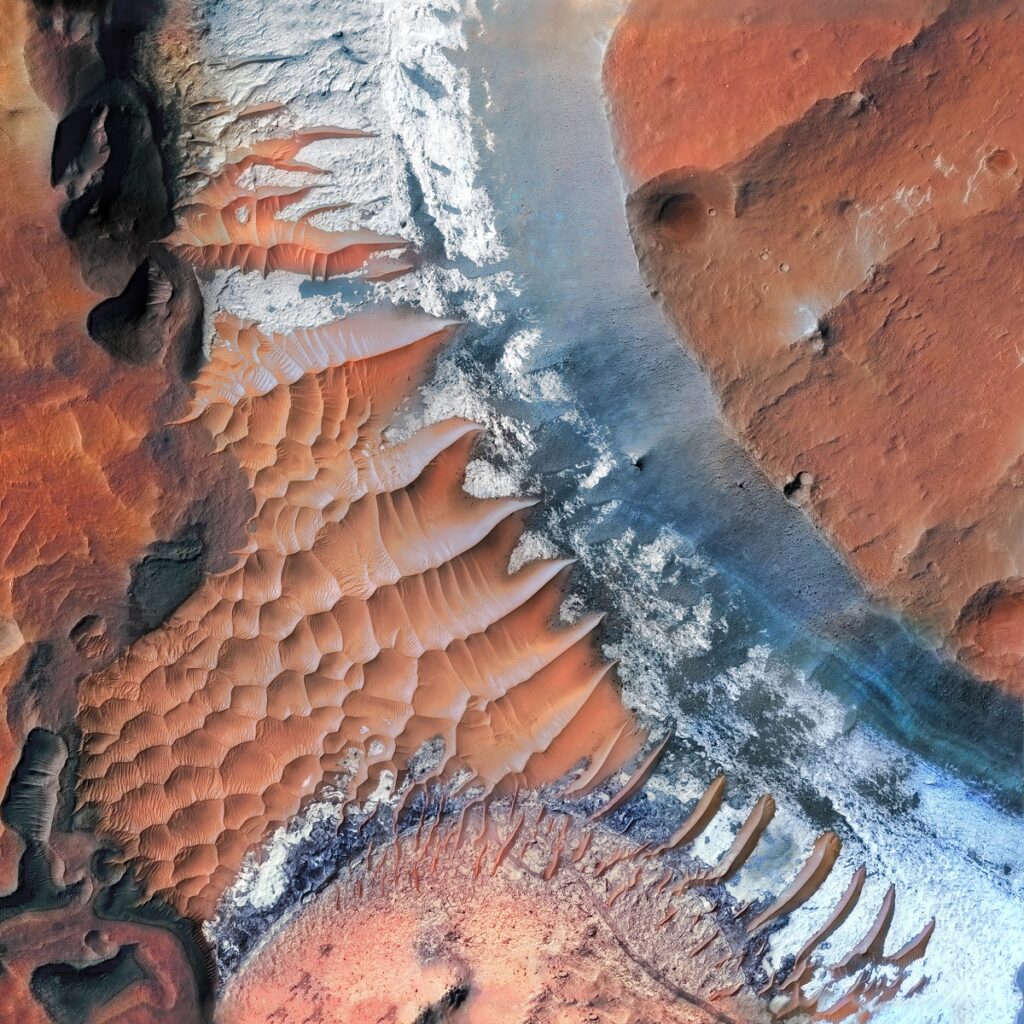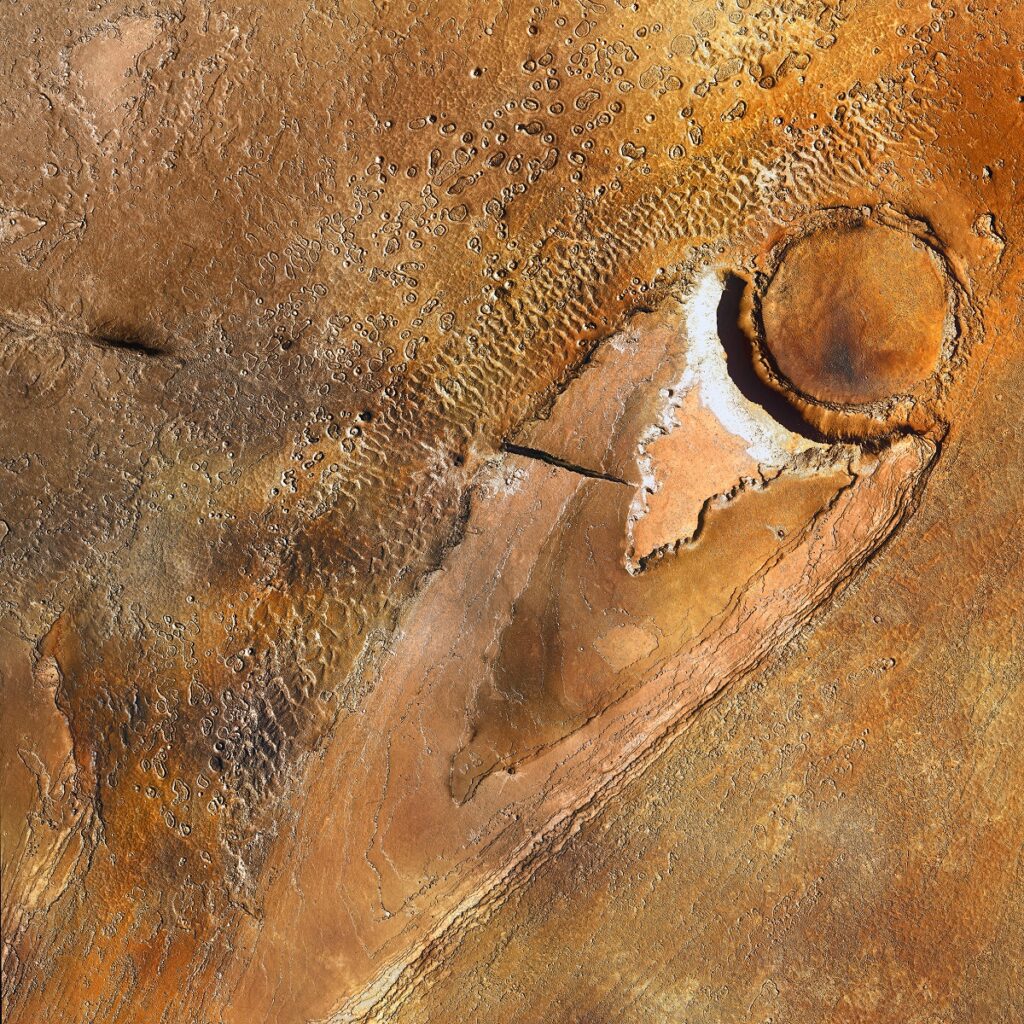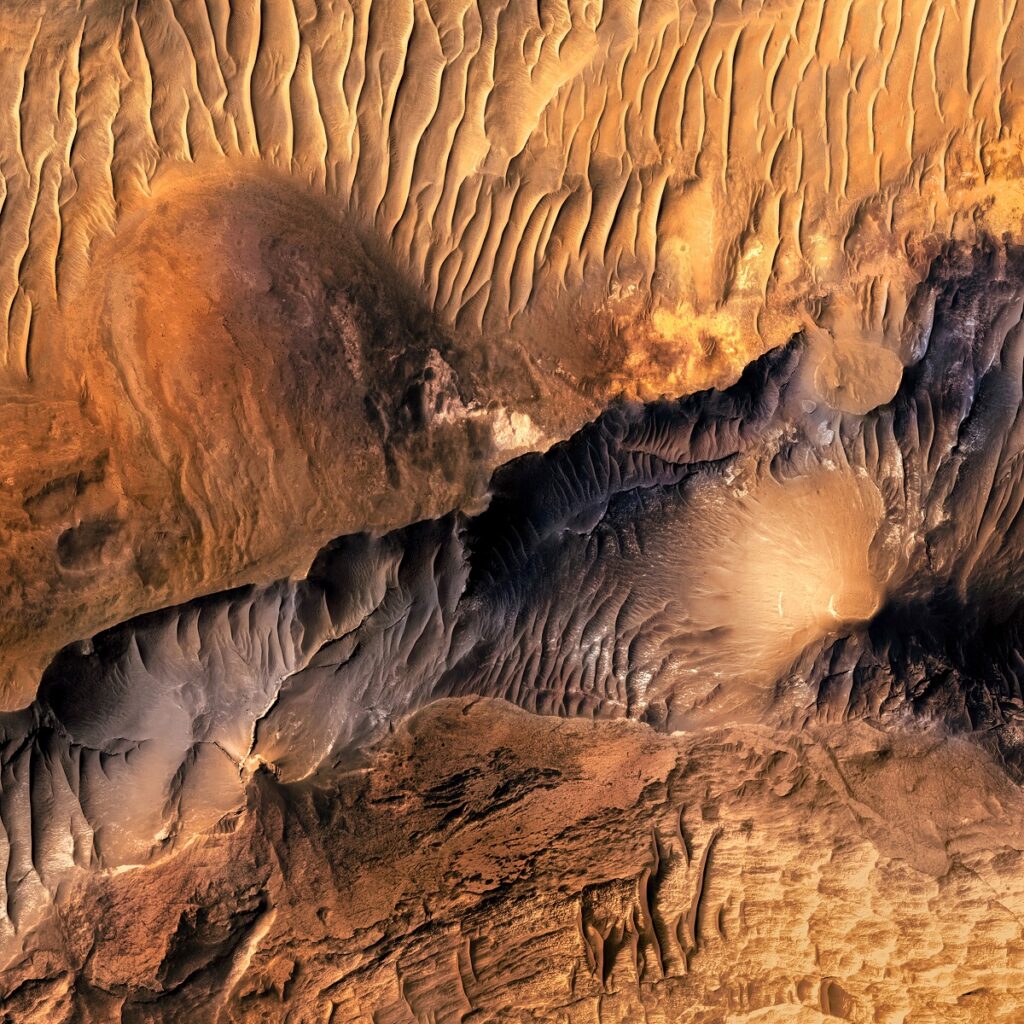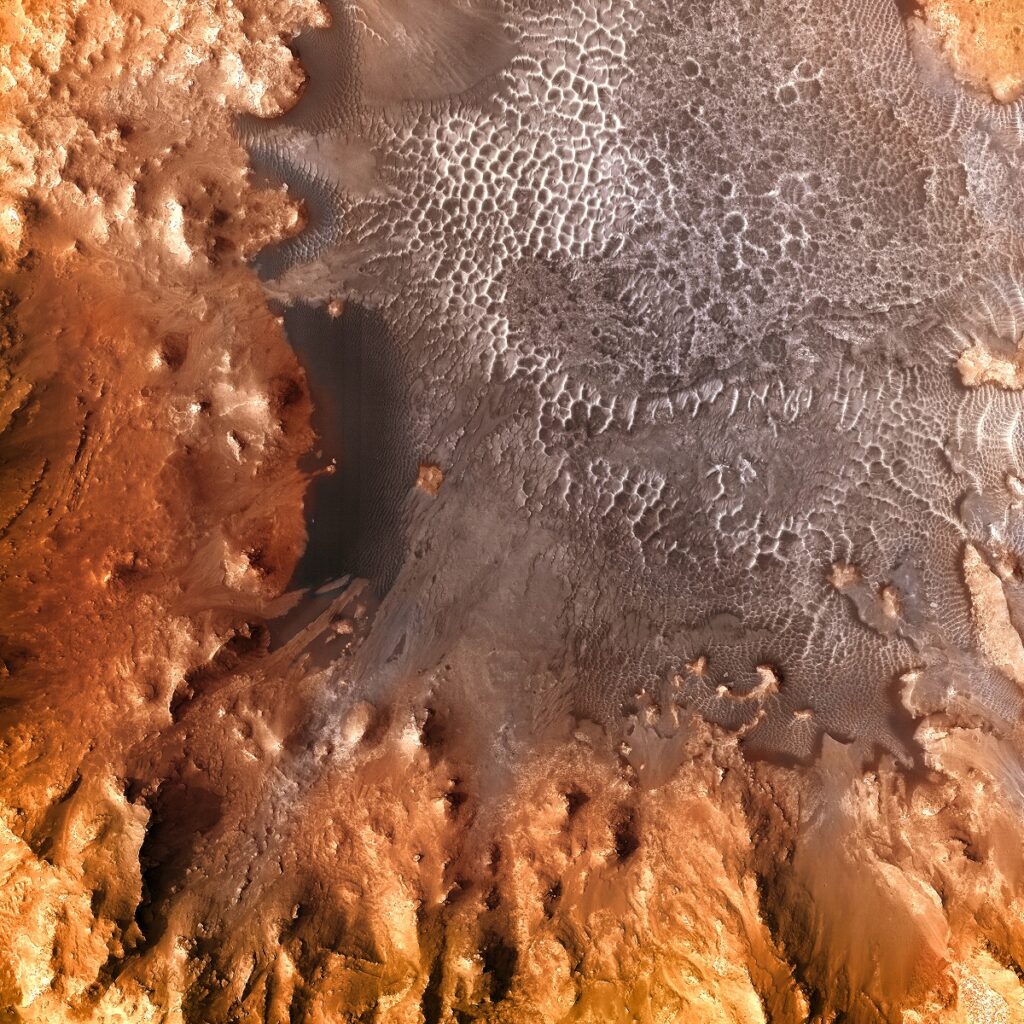Arabia Terra
Arabia Terra
We Build Custom 8K Mars Canvas Prints of Arabia Terra
Did you know we make
custom
8K Mars Canvas Prints
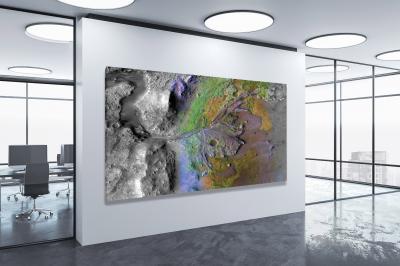
and
3D Marscapes
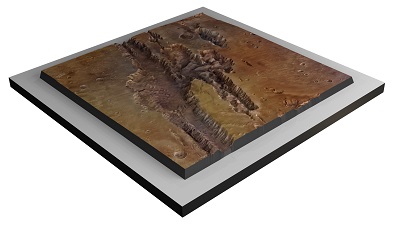
Arabia Terra
Arabia Terra is one of the most fascinating regions on Mars, attracting considerable attention from planetary scientists, astronomers, and geologists alike. This report aims to provide an exhaustive overview of Arabia Terra, covering its geographical location, geological composition, significant discoveries, scientific missions that have studied the region, and its unique geomorphological features.
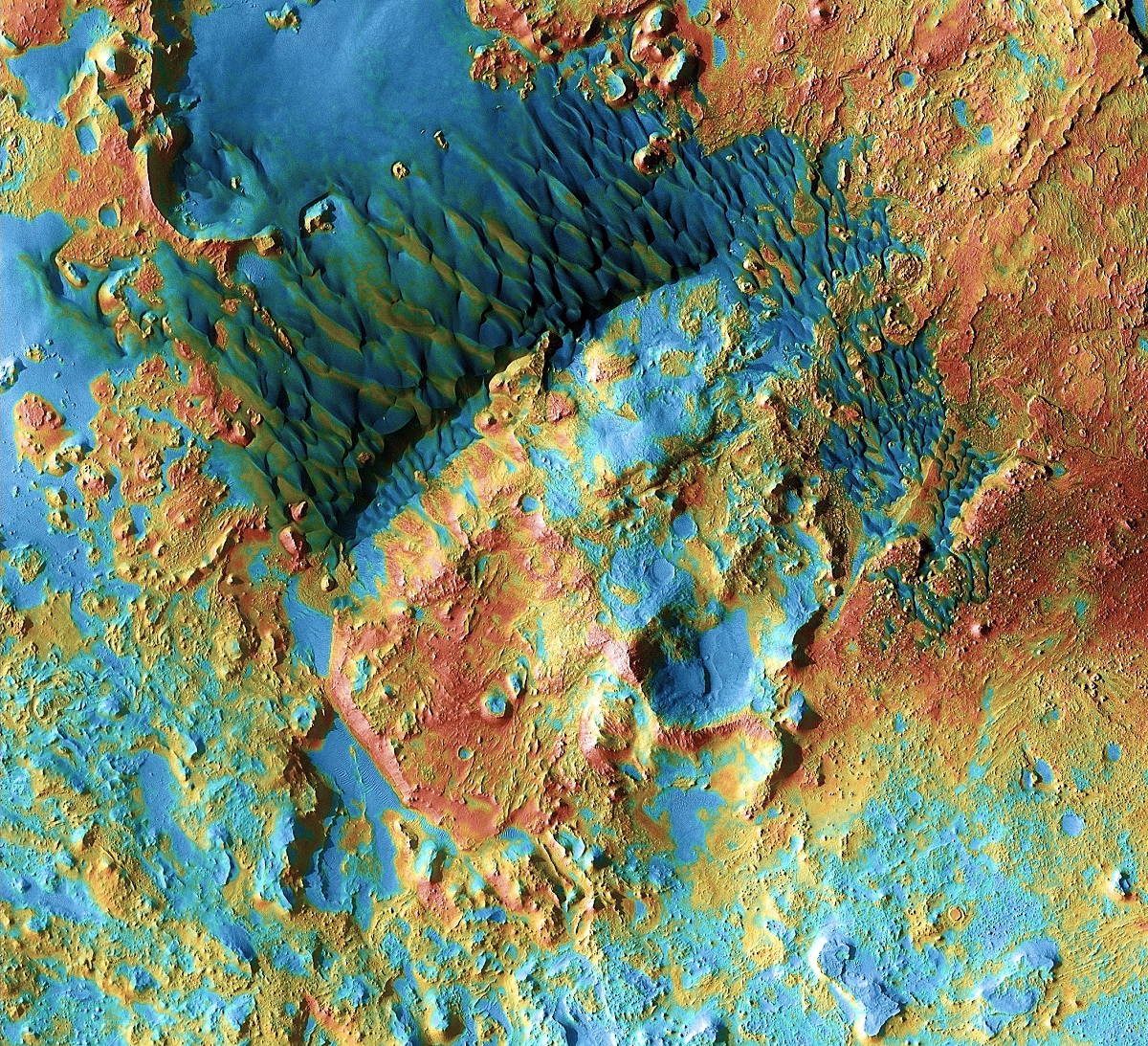 Arabia Dunes
Arabia Dunes
Geographical Location
Arabia Terra is a sweeping and colossal upland region that occupies a significant portion of the northern hemisphere of Mars. It straddles the crucial Martian dichotomy boundary, a major geological frontier that distinctly divides the lower elevation plains from the higher elevation plateaus and terrains. Covering a sprawling area of approximately 4.2 million square kilometers, Arabia Terra stands as one of the most extensive and imposing geographical features on Mars. The region’s geographical coordinates are situated roughly between 0°N to 45°N latitude and 340°E to 30°E longitude. Not confined to just one area, the colossal landmass actually spans multiple Martian quadrangles, such as Oxia Palus, Ismenius Lacus, Sinus Sabaeus, and a few others. It is surrounded by other significant Martian terrains, including the Acidalia Planitia to the north and the rugged, chaotic terrains of Margaritifer Terra to the south. The unique location of Arabia Terra along the dichotomy boundary furnishes scientists with an unparalleled natural laboratory for understanding the interplay between different geological units, making it an epicenter for investigations related to Martian geology, climatology, and possibly even astrobiology.
Advertisement
Sample Marscapes
Geological Composition
Arabia Terra’s geological portfolio is a complex tapestry of landscapes and features that provide invaluable insights into the ancient environmental conditions of Mars. The region is largely made up of Noachian-aged terrain, characterized by an extensive abundance of craters, deep valleys, and expansive basins. These landforms are indicative of an ancient Martian surface dating back at least 3.7 billion years. Spectroscopic data collected from various Mars missions have revealed a remarkable array of mineralogical compositions. These include clay minerals indicative of past aqueous conditions, sulfates related to evaporative processes, and ferric minerals pointing to the region’s oxidative state. Hematite and other iron-bearing minerals have also been detected, offering clues about past water-rock interactions on the Martian surface. Layered sedimentary deposits, evidence of ancient lava flows, and signs of erosional processes combine to construct a multifaceted geological narrative, replete with episodes of sedimentation, volcanism, and weathering, which helps in constructing a well-rounded history of Martian geology.
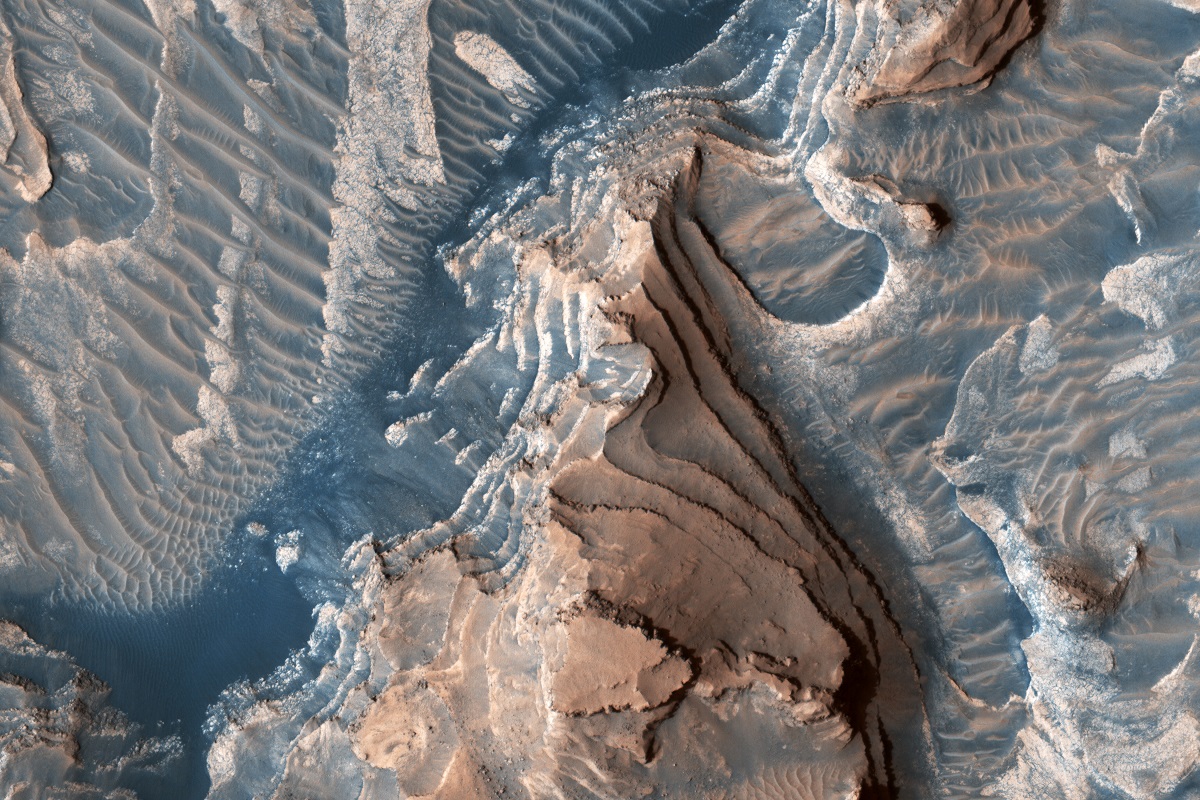 Layered Bedrock in Southwestern Arabia Terra
Layered Bedrock in Southwestern Arabia Terra
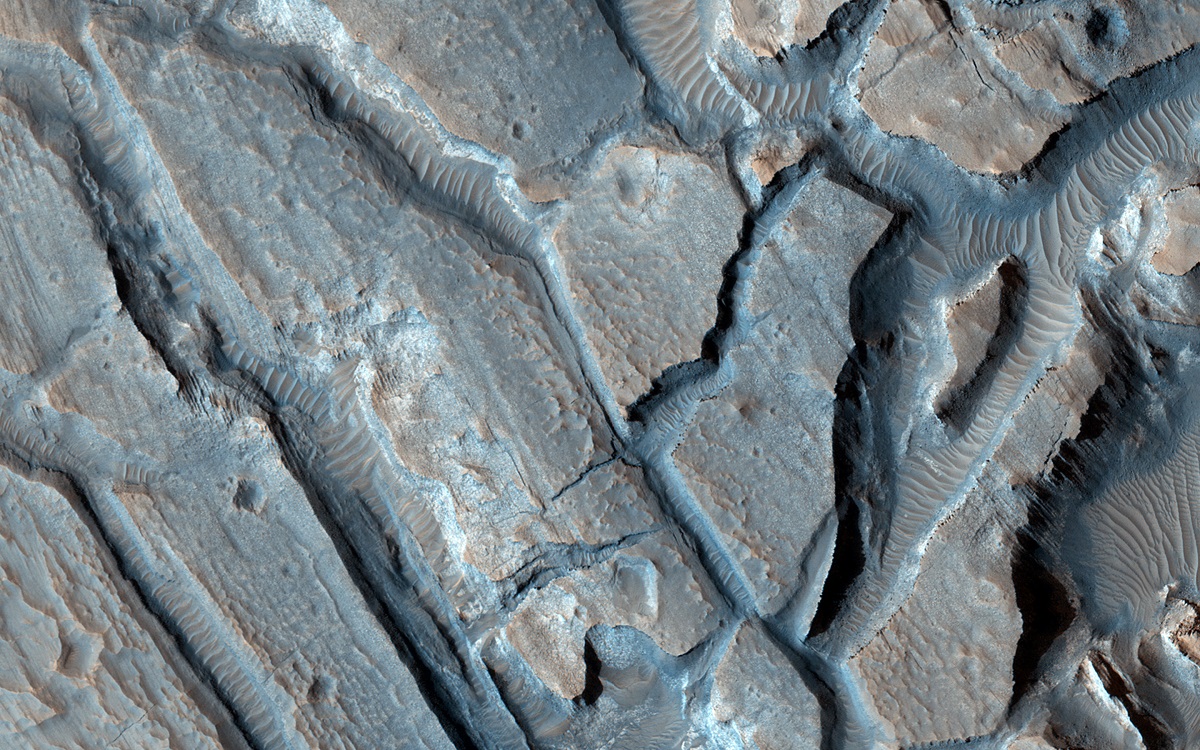 Floor of an Impact Crater in Arabia Terra
Floor of an Impact Crater in Arabia Terra
Significant Discoveries
Evidence of Ancient Lakes
One of the most monumental discoveries in Arabia Terra has been the identification of formations that closely resemble ancient lake beds, river deltas, and intricate valley networks. These hydrological features offer tantalizing insights into Mars’ early climate and suggest that billions of years ago, the planet likely boasted conditions much more akin to Earth.
Crater Morphologies
The region is also notable for its diverse array of craters, which come in a myriad of shapes, sizes, and states of erosion. These variations in crater morphologies offer valuable perspectives on the region’s erosional history and point to the intriguing possibility that ancient ice reservoirs may have once existed below the Martian surface.
Seasonal Changes
In a significant leap for our understanding of Martian climate, observations have also revealed the presence of seasonal frost in Arabia Terra. These findings provide critical data on the existing climatic conditions in this region and their influence on ongoing geological processes.
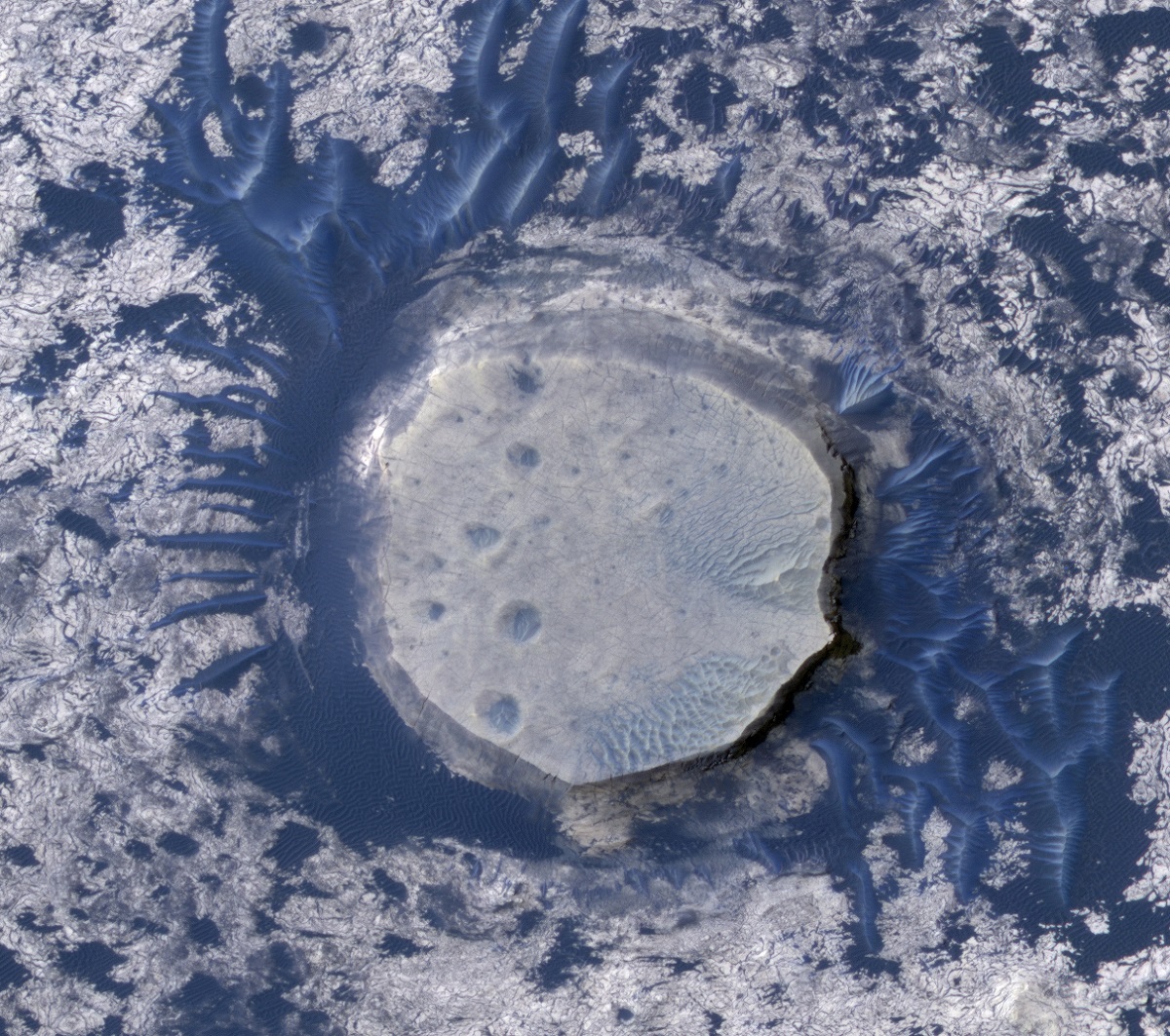 Dunes and Inverted Craters in Arabia Terra
Dunes and Inverted Craters in Arabia Terra
Scientific Missions
Arabia Terra has been the target of comprehensive scientific inquiry by an array of missions led by NASA and the European Space Agency. Missions like the Mars Reconnaissance Orbiter (MRO), Mars Global Surveyor, and Mars Express have provided a treasure trove of data including high-resolution imagery, intricate topographical maps, and extensive spectroscopic data. Specifically, instruments like the Compact Reconnaissance Imaging Spectrometer for Mars (CRISM) on the MRO have been instrumental in identifying a wide array of mineral deposits. This array of data has contributed immensely to our evolving understanding of Arabia Terra’s geological intricacies, hydrological history, and its climatic implications. Although no lander or rover missions have specifically set down in Arabia Terra, the region is often cited as a potential candidate for future scientific exploration due to its rich geological history and the secrets it holds.
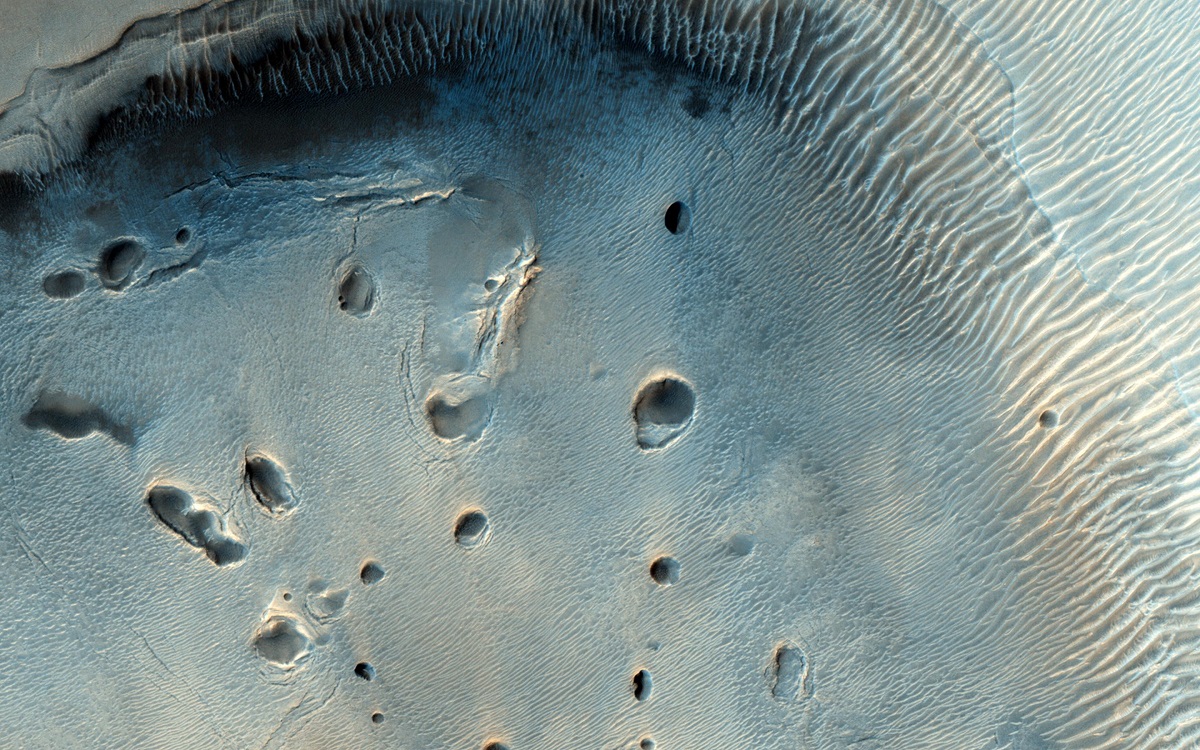 A Dark-Toned, Pitted Mound in a Crater in Northeast Arabia Terra
A Dark-Toned, Pitted Mound in a Crater in Northeast Arabia Terra
Geomorphological Features
Arabia Terra serves as a stunning museum of Martian geomorphological history. The region is littered with a multitude of craters, deep valleys, flat-topped mesas, and sediment-filled basins. Each of these features offers unique insights into the geological processes that have shaped this intriguing landscape. The region is replete with erosional landforms such as gullies, alcoves, and yardangs, which suggest the influence of wind and water over eons. Notably, Arabia Terra also features “etched terrains,” or eroded plateaus and depressions that appear to be carved by a combination of fluvial and aeolian forces. A network of large, interconnected valleys and trough systems strongly suggests the existence of an ancient, and possibly extensive, drainage network on the Martian surface. This wide array of geomorphological features makes Arabia Terra one of the most diverse and instructive terrains for understanding the planet’s complex geological history.
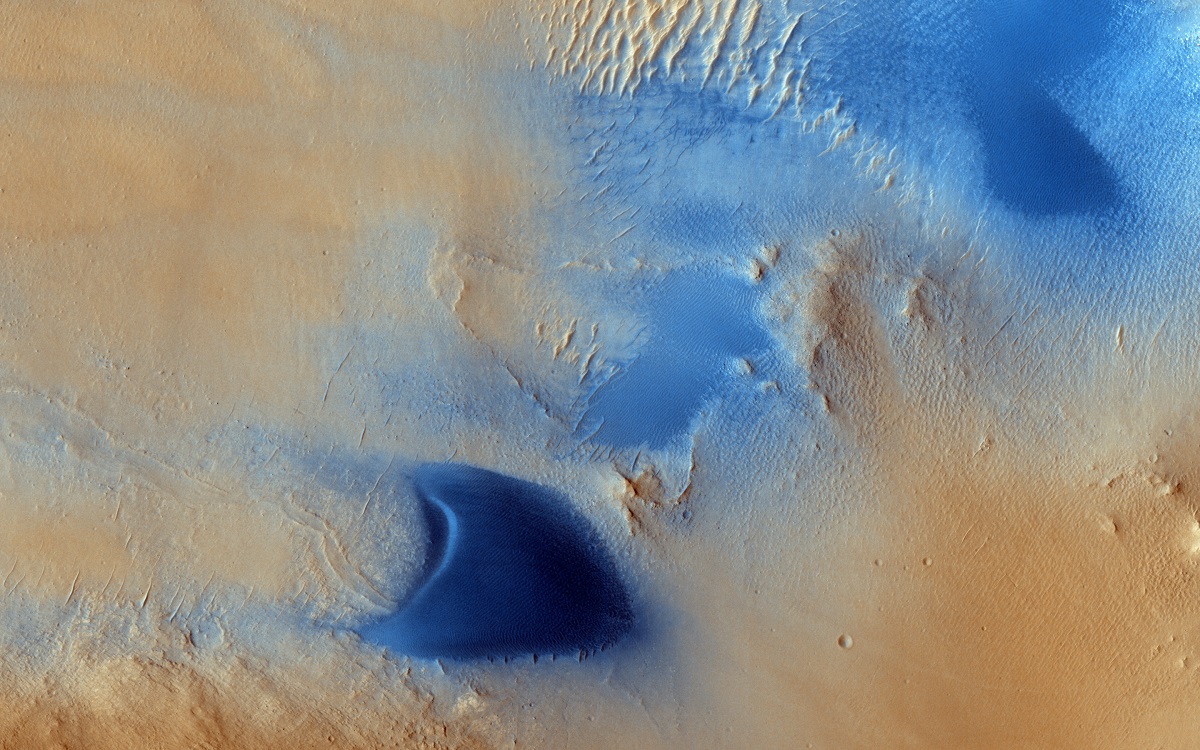 Dunes and Wind Streaks in Arabia Terra
Dunes and Wind Streaks in Arabia Terra
Arabia Terra stands as a monumental archive of Mars’ complex geological and climatic history. Its unique geographical location and varied geological composition make it a focal point for scientific investigation. The significant discoveries gleaned from this region, alongside the data collected from various scientific missions, underscore its importance in advancing our understanding of the Martian environment. As technology progresses and our capabilities for Mars exploration expand, Arabia Terra will undoubtedly continue to be a subject of intense study and curiosity.
More About Mars
Contact us today to learn more about our 3D services and how we can help you achieve your goals.
